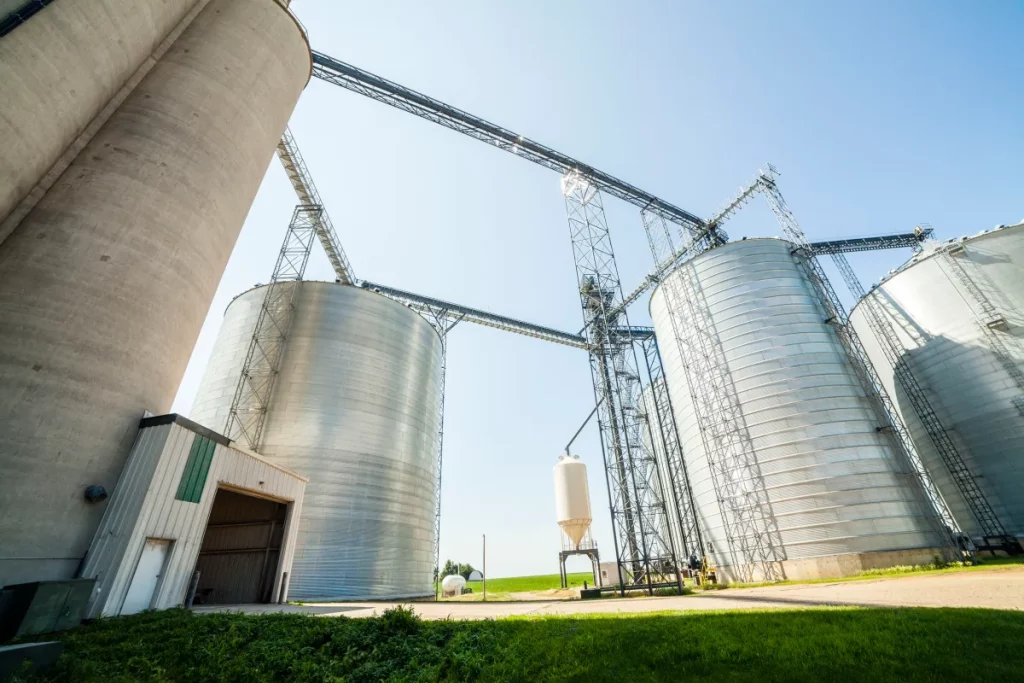Grain storage is an essential aspect of farming and agriculture. It involves appropriately storing and preserving harvested grains such as wheat, corn, rice, etc.
Without proper storage, these grains can spoil quickly due to environmental factors. This can lead to significant losses for farmers and affect the overall supply of grains in the market.
Many farmers are turning to a dedicated grain storage building to combat this issue. These structures offer numerous
What Are The Benefits of a Dedicated Grain Storage Building
1. Easy Handling and Management
Grain storage buildings are designed to be easily accessible. This allows for efficient handling and management of grains. This is especially important during the busy harvesting season.
Farmers can store their grains in an organized manner with a dedicated building. It makes it easier to keep track of inventory and manage crop rotation. This also reduces the risk of spoilage and loss due to mishandling.
2. Enhanced Preservation
Proper storage is crucial for preserving the nutritional quality of grains. Grain storage buildings offer ideal conditions. This includes controlled temperature and humidity for keeping grains.
Grain storage building ensures that grains are stored in optimal conditions. It reduces the risk of spoilage and maintains high-quality crops. This is especially beneficial for farmers who plan to sell their grains later.
3. Pest Proof
Grain storage buildings are designed to be pest-proof. It can protect harvested grains from insects, rodents, and other pests. This is important as these pests can infest and contaminate grains if unprotected.
Farmers can reduce the risk of pest damage to their crops with a dedicated grain storage building. This means lower losses and increased profits for farmers.
They can also use grain bin floors. These are crucial in maintaining the quality of the grain. It can prevent the grains from coming into contact with the ground, which can be damp or contaminated with pests.
4. Increased Capacity
Dedicated grain storage buildings are designed with maximum capacity in mind. Farmers can choose the size of their building based on their storage needs. This allows them to store larger quantities of grains compared to traditional methods.
This increased capacity can help farmers in terms of reduced transportation. Having ample storage space allows farmers to take advantage of bulk grain purchases. They can hold onto their crops until prices are more favorable.
5. Improved Crop Management
Farmers have more control over their crop management with dedicated grain storage buildings. They can segregate their grains based on quality, type, or harvest time, making it easier to control the storage conditions for each batch. This can lead to improved crop quality and higher market value.
Having a building reduces the risk of cross-contamination between different types of grains. This is important as certain grains may require specific storage conditions to maintain quality.
6. Optimal Investment
These structures offer a return on investment over time. It reduces losses from spoilage. This can improve crop quality and market value. It also provides cost savings through efficient storage and handling.
Grain storage buildings can add value to a farm property and increase its resale value. They are a long-term investment that offers numerous benefits for farmers.
Conclusion
The advantages of a dedicated grain storage building cannot be overstated. These structures support farmers in maintaining high-quality grains and maximizing profits. So, farmers need to consider investing in a dedicated grain storage building. It will improve their operations and secure their future in the agriculture industry.
Read Now: How to Choose The Perfect School Storage Cabinets
Michael C Vang is a passionate blogger. He has been blogging since 2013 on a variety of topics. He is committed to creating informative and engaging content that helps readers learn more about everything.



